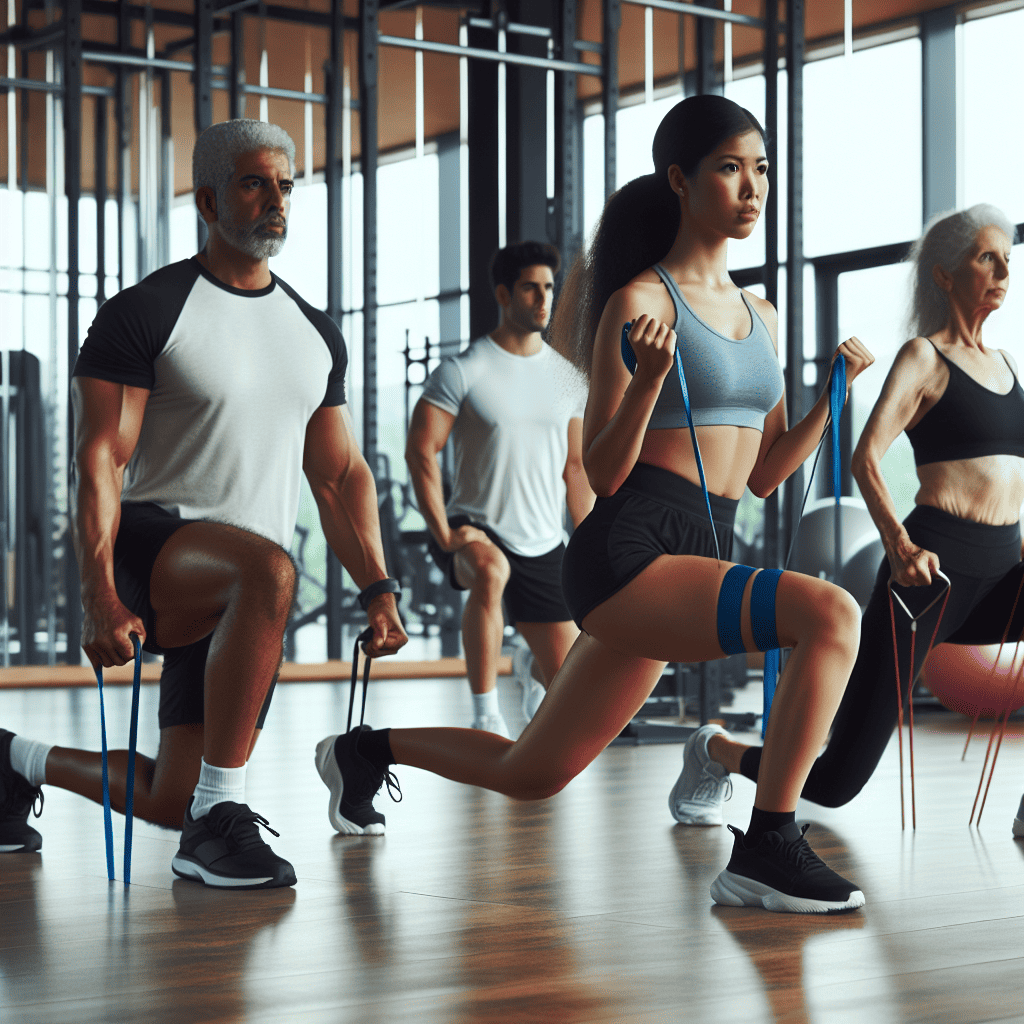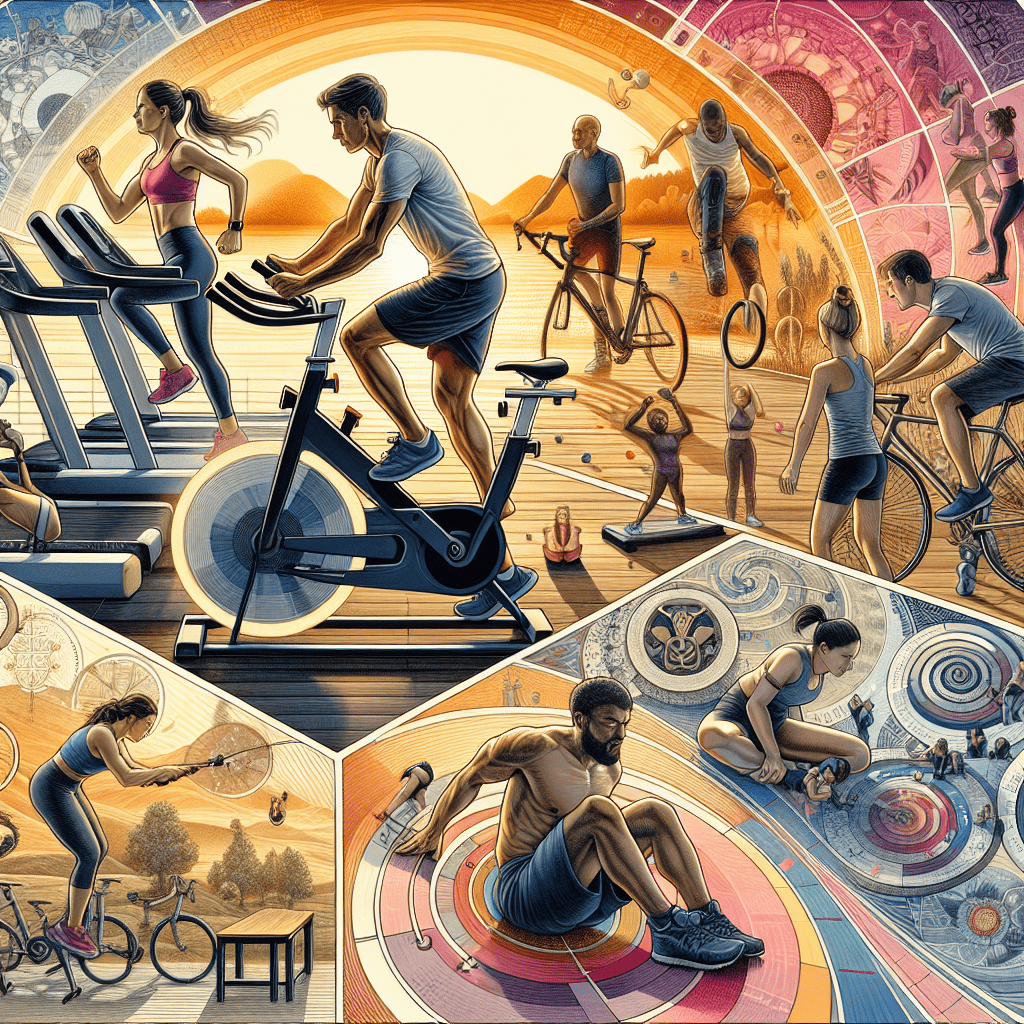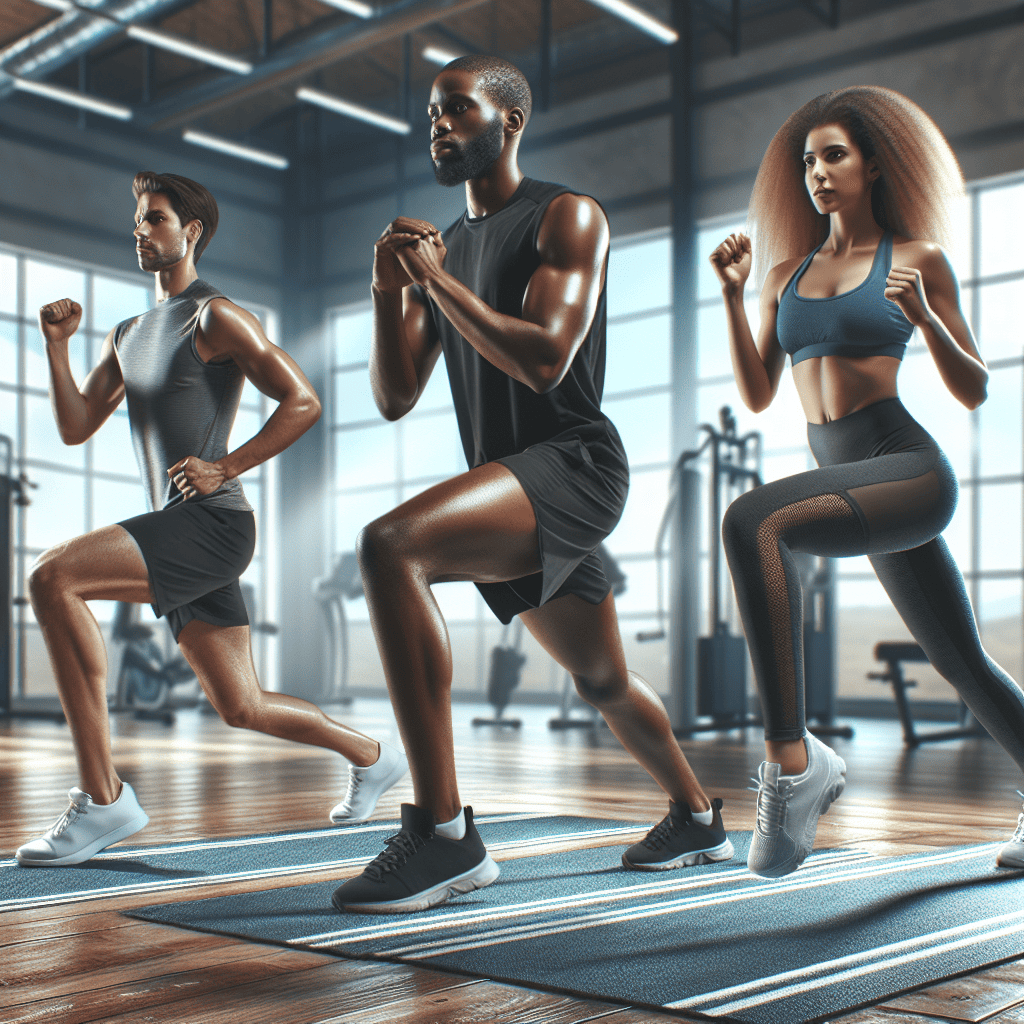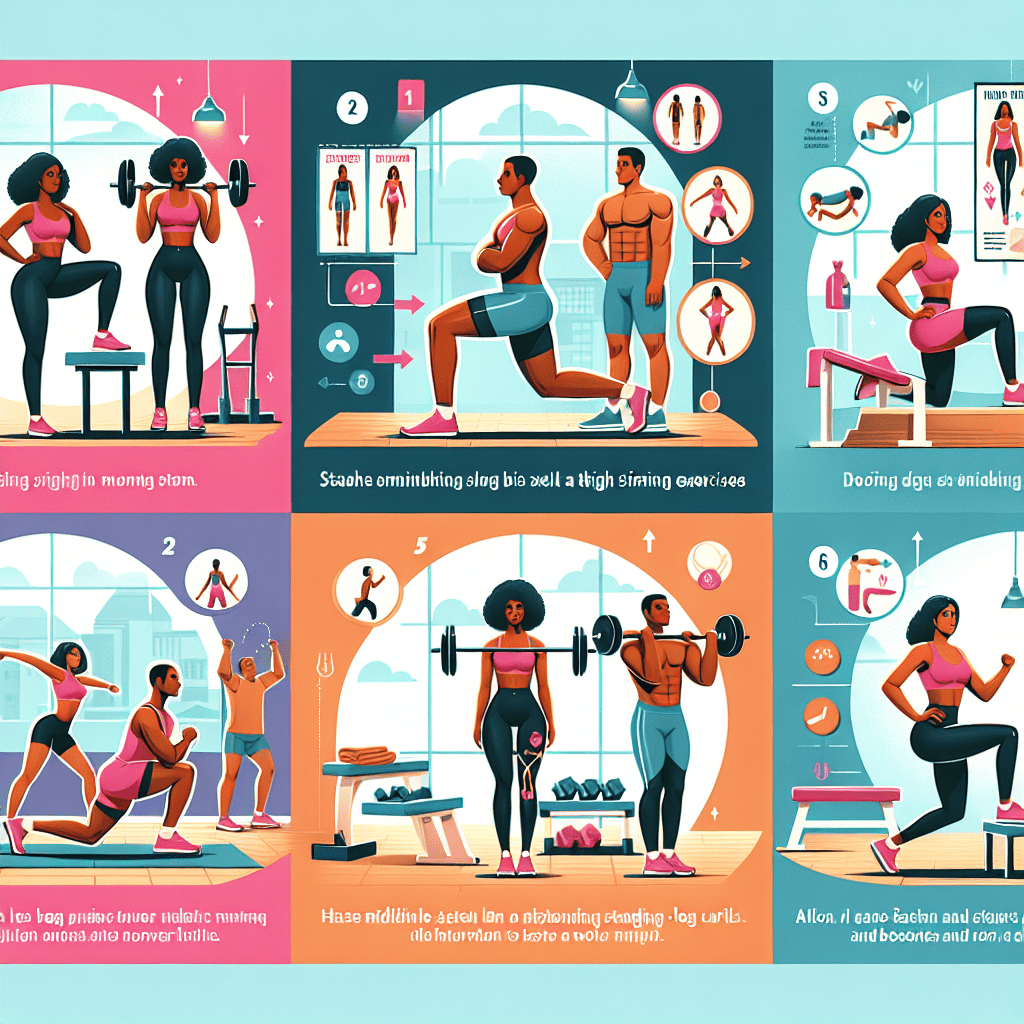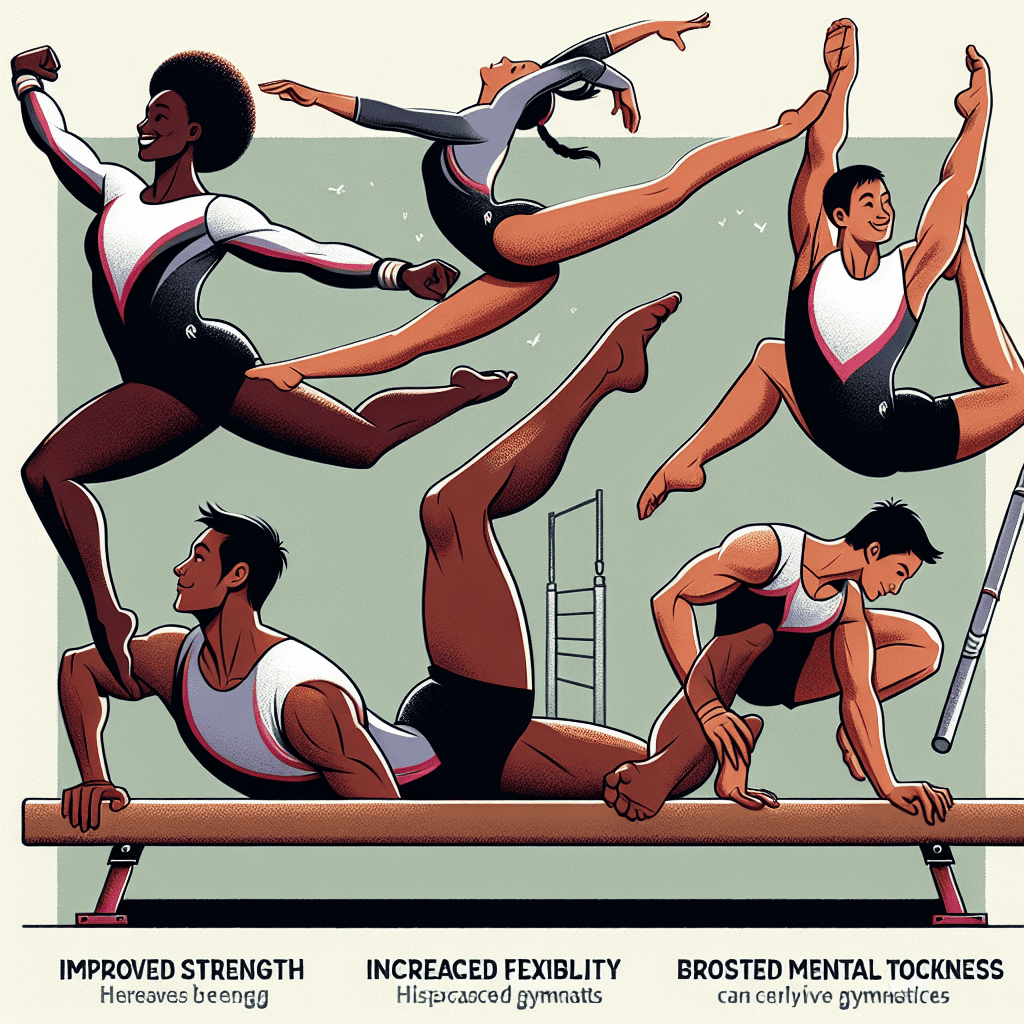Introduction: When it comes to fitness goals, slimming and toning the thighs is high on the list for many. In this blog post, we will explore a series of effective exercises that specifically target the thighs, helping you achieve the desired results in a week. By combining these exercises with a healthy diet, you can see a noticeable improvement in the tone and shape of your thighs in a short time.
Table of Contents
Leg Press
The leg press exercise is ideal for engaging both the front and back of the thighs, making it a great choice for slimming and toning. Here’s how you can perform this exercise:
- How to Do Leg Press:
When using a machine like the leg press, it is important to ensure that the seat is adjusted to your height and comfort level before starting your exercise. This will help in achieving the proper range of motion and ensure that you target the intended muscle groups effectively. Positioning your feet shoulder-width apart on the platform provides a stable base of support during the exercise. It helps in distributing the weight evenly and maintains balance throughout the movement. By starting with the correct foot placement, you can avoid unnecessary strain on your joints and maximize the efficiency of the exercise.
During the leg press exercise, the focus should be on pushing against the platform with your feet to extend your knees. It is crucial to emphasize controlled movements while extending your legs to avoid locking your knees, which can lead to potential injury. The controlled movement not only ensures safety but also helps in engaging the target muscles more effectively. As you push the platform away from your body, engage your quadriceps, hamstrings, and glutes to fully extend your knees. This contracting action helps in strengthening and building muscle endurance in these key lower body muscle groups.
After extending your knees, slowly return to the starting position by bending your knees. This part of the movement is equally important as the extension phase. By controlling the descent of the weight back to the starting position, you engage your muscles eccentrically, which contributes to muscle strength and stability. The eccentric phase of the exercise also helps in enhancing muscle control and coordination. Repeat the leg press exercise for the desired number of repetitions, focusing on maintaining proper form and controlled movements throughout the set. Proper form, controlled movements, and the right foot placement are crucial elements in maximizing the benefits of the leg press exercise and preventing injury.
- Benefits of Leg Press:
The leg press is a popular exercise that mainly targets the muscles in the thighs, including the quadriceps, hamstrings, and glutes. By engaging these muscles, the leg press helps in promoting strength, endurance, and muscle development in the lower body. The quadriceps, located at the front of the thighs, are especially worked during the leg press exercise, leading to improved strength and definition in this muscle group. Additionally, the hamstrings at the back of the thighs and the glutes are also activated, contributing to overall leg strength and stability. The combination of these muscle activations in the leg press makes it a comprehensive lower body exercise.
In addition to strength gains, the leg press is also effective for toning and shaping the thighs. By incorporating the leg press into a workout routine, individuals can target and sculpt their thigh muscles, leading to improved muscle definition and aesthetic appeal. The controlled and stable motion of the leg press allows for precise targeting of specific thigh muscles, enabling individuals to focus on areas they want to tone. Additionally, by adjusting the foot placement on the platform, the emphasis on different thigh muscles can be varied, providing a versatile workout that can address different parts of the thighs. This ability to customize the exercise makes the leg press an excellent choice for individuals looking to tone and shape their thighs.
Furthermore, the leg press is a suitable exercise for individuals of various fitness levels. It can be adjusted to accommodate different strength levels by modifying the weight load on the machine. Beginners can start with lighter weights and gradually increase the resistance as they progress. Alternatively, more advanced individuals can challenge themselves by adding more weight to continue building strength and muscle mass. The leg press machine also offers a safe and stable environment for performing the exercise, reducing the risk of injury compared to free weight exercises. Overall, the leg press is a versatile and effective exercise that targets multiple thigh muscles, promoting both strength and aesthetic benefits.
Squat Exercises
Squats are versatile and effective for slimming the thighs. Here’s a guide on performing squat exercises:
- How to Do Squats:
When performing a squat exercise, it is crucial to ensure proper form and technique. By standing with your feet hip-width apart, you create a stable base of support for the movement. Lowering into a squat position engages the muscles in the lower body, including the quadriceps, hamstrings, and glutes. It’s important to push your hips back first before bending your knees to prevent placing excessive strain on the knees.
Maintaining a straight back and upright chest throughout the squat helps protect the spine and promotes good posture. This alignment also ensures that the muscles are properly engaged and the movement is being executed effectively. As you lower into the squat position, focus on keeping your weight on your heels to activate the posterior chain and maintain balance. Engaging the core muscles can also enhance stability and support during the squat.
Returning to the starting position by pressing through your heels engages the lower body muscles to drive the movement. The upward phase of the squat requires pushing against gravity and activating the muscles in the legs and glutes. By emphasizing the heel drive, you can effectively distribute the workload among the muscle groups involved in the squat. Gradually incorporating squats into your workout routine with proper form can help improve lower body strength, stability, and overall functional fitness.
- Benefits of Squat Exercises:
Squats are a fundamental compound exercise that engages not only the thighs but also a variety of other major muscle groups, such as the glutes, hamstrings, and core. By incorporating squats into a workout routine, individuals can effectively target these muscles, leading to improvements in lower body strength, power, and overall stability. The movement of a squat involves bending the knees and hips while lowering the body towards the ground and then returning to a standing position. This action recruits the muscles in the thighs to perform the movement, making it a key exercise for developing strength in this area.
In addition to building muscle strength, squats also contribute to enhanced balance and coordination. The act of maintaining proper form during a squat requires core stability and control, which translates to better balance and coordination in everyday activities. As individuals progress in their squatting abilities, they often find improvements in their ability to stabilize themselves during movements and various exercises, leading to an overall increase in functional fitness. By working multiple muscle groups simultaneously, especially in the lower body, squats can help individuals develop a strong foundation that supports daily movements and reduces the risk of injury.
Furthermore, squats are highly effective in toning and slimming the thighs. While spot reduction is not possible, regular squatting can contribute to firming and shaping the muscles in the thighs, ultimately leading to a more toned appearance. The engagement of the thighs during squats involves both the quadriceps at the front of the thigh and the hamstrings at the back, which contributes to a comprehensive thigh workout. When paired with a balanced diet and a consistent exercise routine, squats can be a valuable tool in achieving leaner thighs and overall lower body strength and aesthetics.
Pushups with Rubber Ball
Target the inner thighs with pushups using a rubber ball. Here’s how you can incorporate this exercise into your routine:
- Performing Pushups with Rubber Ball:
This exercise is a simple yet effective way to strengthen the inner thigh muscles, also known as the adductors. By lying on your back, you engage your core muscles to maintain stability while focusing on the targeted area. Placing a rubber ball between your knees provides resistance, requiring your thigh muscles to work harder to press against it. This not only helps to tone and firm the inner thighs but also improves overall leg strength. The controlled movement of contracting the thighs for 30 seconds helps to build endurance in these muscles, which can be particularly beneficial for activities that require stability and balance.
Furthermore, by isolating the adductors with this exercise, you can address muscle imbalances that may exist in the inner thigh region. Strengthening these muscles can contribute to better overall lower body alignment and reduce the risk of injuries, such as strains or sprains, especially during activities that involve side-to-side movements or quick changes in direction. Additionally, incorporating exercises like this into your fitness routine can enhance your performance in compound movements like squats and lunges, as a strong inner thigh muscles provide better support for the knees and hips during these exercises.
Incorporating the knee-press exercise with a rubber ball into your regular workout routine can also have functional benefits outside of the gym. Strong adductor muscles can improve your posture and help alleviate strain on the lower back by promoting better alignment of the pelvis and spine. This exercise can be particularly useful for individuals who sit for extended periods or have jobs that require a lot of standing, as it targets muscles that support hip stability and overall lower body strength. By performing this exercise regularly and gradually increasing the intensity or duration of the holds, you can continue to challenge and strengthen your inner thigh muscles, leading to improved muscle tone, balance, and overall lower body strength.
- Benefits of Pushups with Rubber Ball:
Isolating the inner thigh muscles through this exercise is an effective way to target and tone that specific area. By focusing on these muscles, you can work towards slimming and sculpting this part of the body. The inner thigh muscles, also known as the adductors, play a crucial role in stabilizing the hips and thighs. Strengthening them not only improves the appearance of the inner thighs but also enhances overall lower body strength and functionality.
Moreover, this exercise offers benefits beyond just toning the inner thighs. The engagement of these muscles also contributes to improved core stability. As you perform the movements, the core muscles, including the abdominals and obliques, are activated to support the body’s posture and balance. This activation helps to strengthen the core, which is essential for maintaining proper alignment and preventing injuries during various physical activities or daily movements.
Additionally, incorporating this exercise into your fitness routine can lead to a more balanced and symmetrical physique. By targeting the inner thigh muscles along with other muscle groups through a well-rounded workout regimen, you can achieve a more proportionate body shape. Working on both the inner and outer thigh muscles, as well as other major muscle groups, can help create a harmonious balance in muscle development, leading to improved overall strength, stability, and aesthetics.
